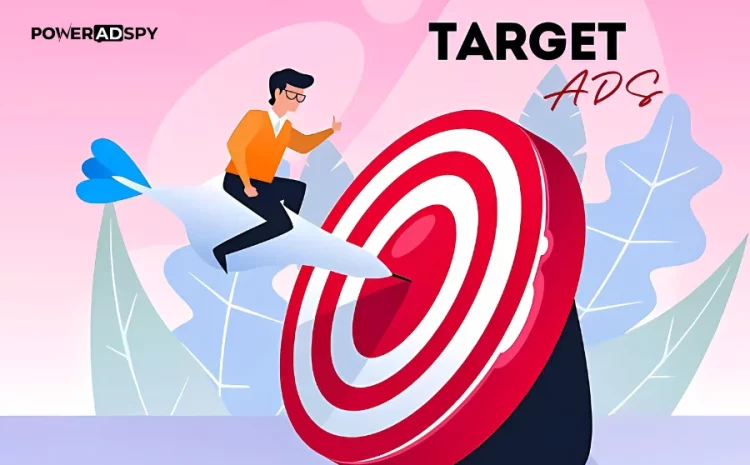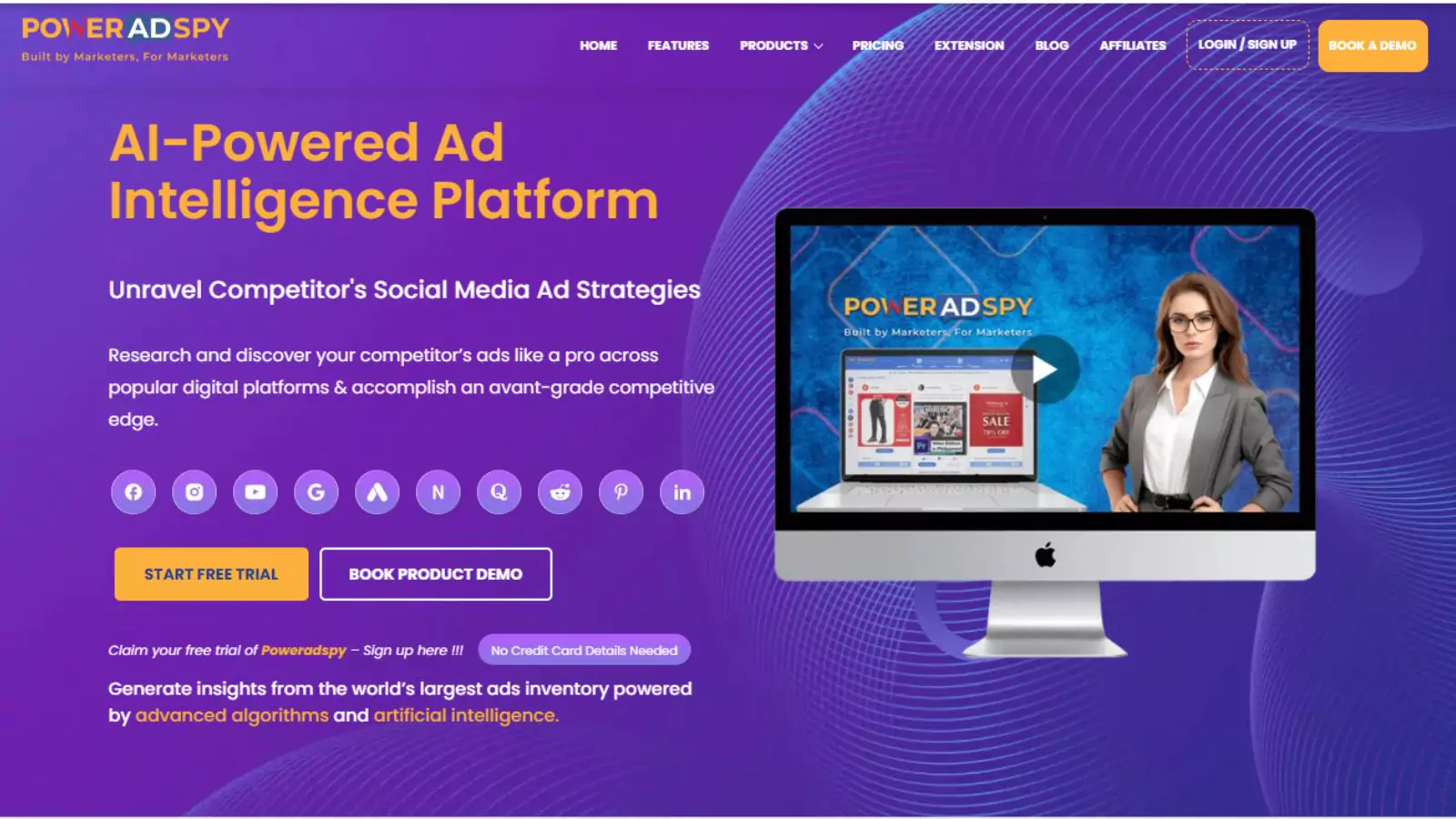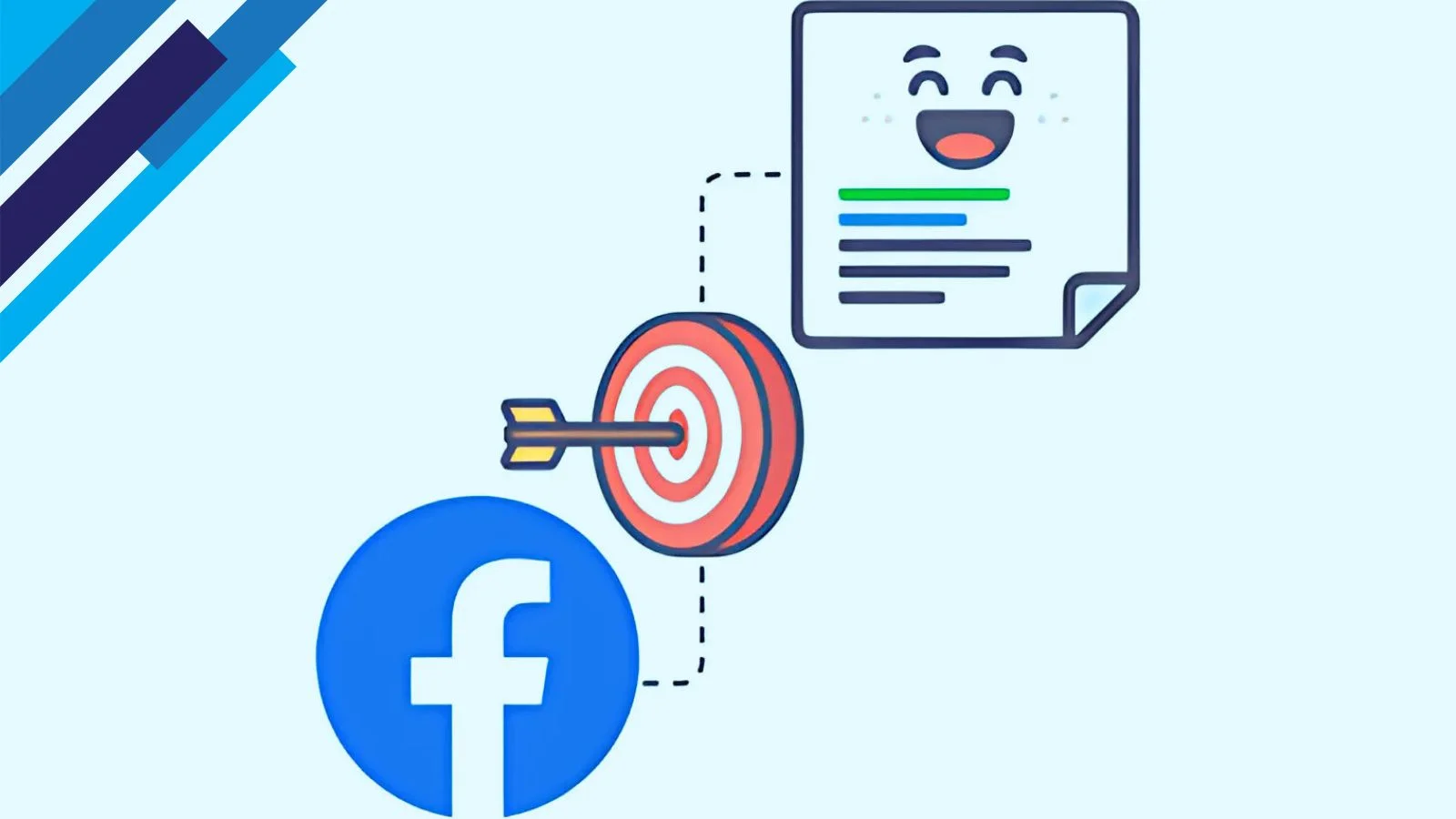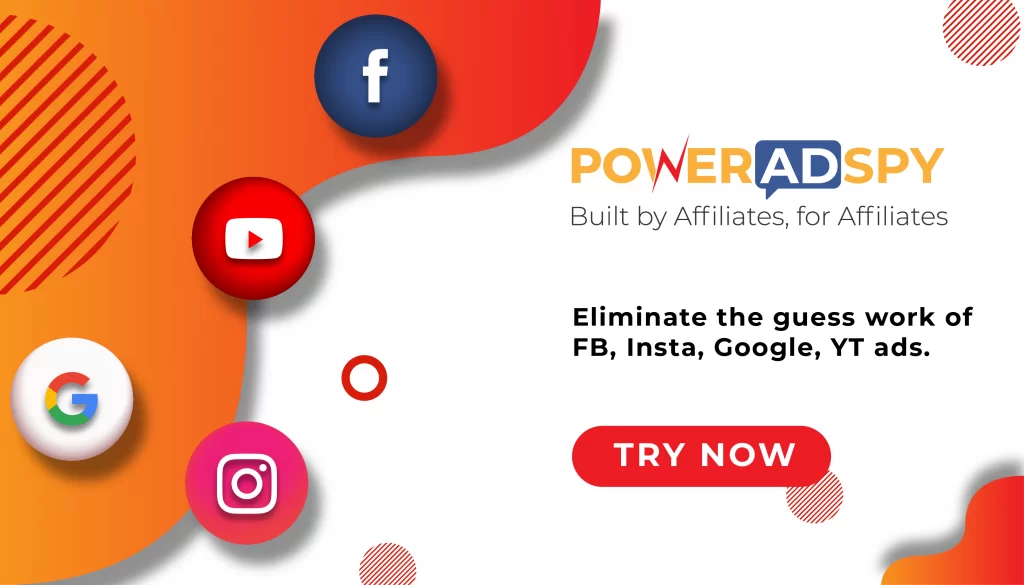What Are Target Ads? A Complete Guide For Businesses
Businesses are constantly seeking ways to connect with the right audience. Target ads have emerged as a powerful solution, enabling brands to deliver personalized messages to specific groups based on their interests, behaviors, and demographics.
By focusing on precision, targeted advertising helps increase engagement, improve conversion rates, and maximize ROI.
In this blog, we’ll explore how target ads work, why they’re essential for modern marketing strategies, and how businesses can effectively leverage- them to reach their ideal customers.
Let’s start!
In a hurry? Listen to the blog instead!
What Are Target Ads, And How Do They Work?
Targeted advertising, or ad targeting, is a marketing strategy that involves presenting consumers with ads tailored to their specific traits, interests, and shopping behaviors. By leveraging customer data, marketers segment audiences based on demographics, shopping preferences, and browsing history, allowing for the creation of personalized advertisements aimed at each group. This approach contrasts with general ads placed indiscriminately across the web, as target ads are strategically positioned to reach a clearly defined audience.
The process of targeted advertising involves several key steps:
- Data Collection: Companies gather or purchase data about users or user groups.
- Data Analysis: The collected data is analyzed to extract useful insights about consumer behavior.
- Audience Segmentation: Advertisers segment their audience based on these insights, determining which ads are best suited- for specific groups.
- Ad Placement & Personalization: Using the insights gained, advertisers strategically place ads where they will be most effective and customize the content to align with the target audience’s interests.
- Optimization & Tracking: After ads are displayed, additional data on their performance is collected, allowing for future optimizations to enhance effectiveness.
This rapid and technology-assisted process ensures that users- receive relevant advertisements, increasing engagement and driving better marketing results.
Main Goal Of Target Ads
The primary goal of target ads is twofold:
- Reach The Right Audience: The first aim is to ensure that ads reach the appropriate audience at the optimal time. It can be achieved by selecting the right platforms for advertising- be it specific publications or leveraging data-driven strategies to target users in a social media environment.
- Enhance Personalization: The second aim is to tailor advertisements to individual users or specific groups. Personalization is crucial, as 62% of consumers- are likely to consider switching brands if they don’t receive a personalized experience.
The goal of weekly target ads or any other target ads is to connect with the right customers at the right moment to encourage a purchase. Effective targeted advertising on social media campaigns utilizes various strategies to optimize ad placement and improve personalization. By leveraging ad intelligence tools like
PowerAdSpy, advertisers can gain valuable insights into competitors’ ad strategies, allowing them to refine their approach. Ultimately, these efforts aim to engage consumers more effectively and increase conversion rates.
Types Of Targeted Advertising
The abundance of data available to marketers has led to various types of target ads. Typically, marketers employ a mix of techniques to reach users, often combining several targeting methodologies. Here are the main types:
-
Demographic Targeting
This method allows advertisers to target specific groups based on demographic information such as age, gender, income level, and education. While demographic targeting can be powerful, marketers must exercise caution to avoid harmful targeting practices. For instance, Meta has removed certain demographic targeting options due to regulatory concerns about stereotype-based targeting and GDPR compliance.
-
Geographic Targeting
This approach enables advertisers to display ads based on the user’s location. It is particularly beneficial for marketplace or classifieds apps aiming to connect with users in specific cities, allowing advertisers to tailor messages according to local ads and cultural preferences.
-
Interest-Based Targeting
This method helps advertisers reach users based on their anticipated interests or hobbies, typically derived from data about their online activities.
-
Contextual Targeting
One of the oldest forms of target ads, contextual targeting remains effective today. It involves placing ads alongside specific publications that attract a relevant audience; for instance, an ad for football jerseys might be displayed- on a sports-related website.
-
Retargeting
This is a fundamental aspect of many marketing campaigns. Retargeting displays ads to users who have previously interacted with a brand’s products, website, or app, aiming to re-engage them and encourage them to complete a desired action.
-
Lookalike Audience Targeting
This strategy allows advertisers to target audiences that share similar characteristics or behaviors with their existing customers, as these users are likely to have comparable interests or needs.
Each targeting method varies in accuracy and effectiveness. For example, demographic targeting often relies on broader characteristics such as age, gender, and income, which may not always reflect a user’s true preferences or intentions.
Let’s consider an example-
A small business owner, let’s call her Sarah, is juggling expenses and looking for affordable accounting software to keep her finances in order. She’s not a big corporation; she’s simply trying to make her operations smoother without breaking the bank.
If she’s targeted solely based on her demographic profile, she might get ads for office supplies or expensive corporate software that doesn’t fit her needs. But with AI-powered retargeting, the story changes. Let’s say she recently read up on budget-friendly tools or looked at reviews for accounting software built for small businesses. Now, she starts seeing ads for affordable options catering to her needs—easy, accessible tools to help her run her business smarter.
This kind of targeting feels personal like the ad understanding her needs looking for. She’s much more likely to consider the product because it’s relevant to her real-world needs, not just her demographic. It’s not just better targeting; it’s a more genuine connection that respects her time and leads to better results for both her and the advertiser.
PowerAdSpy aids in refining this process by offering insights into competitors’ ad campaigns which helps in understanding and targeting competitors better. It helps marketers analyze which ad formats and strategies are most effective for specific audiences, making it easier to develop and execute highly targeted retargeting campaigns. By using these insights, businesses can ensure that their ads reach the right customers, boosting engagement and optimizing advertising spend.
PowerAdSpy: Advanced AI-ad Intelligence Tool
PowerAdSpy is a powerful AI-driven ad intelligence platform that helps businesses discover, analyze, and monitor competitors’ ads across multiple platforms. With detailed insights, it allows users to refine their ad strategies, maximize ROI, and stay ahead of market trends effortlessly.
PowerAdSpy is designed to help businesses optimize their ad strategies and stay ahead of the competition. Here are its key features:
- Ad Intelligence: Access a vast database of ads across platforms like Facebook, Instagram, Google, YouTube, and more to analyze competitors’ ad strategies.
- Target Audience Insights: Discover the specific audience demographics and interests targeted by top-performing ads.
- Ad-Filter Options: Refine searches using filters like ad position, call-to-action, engagement metrics, and time frame for precise analysis.
- Competitor Monitoring: Track competitors’ ad performance in real-time, enabling you to stay updated on market trends.
- Creative Inspiration: Get ad copy and design ideas from successful campaigns to improve your own ads’ engagement and conversion.
- Advanced Analytics: Generate detailed reports on ad performance, helping you refine your targeting and content strategy for better ROI.
These features make PowerAdSpy a valuable tool for businesses looking to maximize the effectiveness of their ad campaigns.
Benefits Of Targeted Advertising
Targeted advertising provides significant advantages for both producers and consumers.
Benefits For Producers
- Increased Efficiency: Target ads allow producers to serve ads to customers who are more likely to be interested in their products, optimizing ad spend.
- Enhanced Connection: It helps producers connect with customers exhibiting buying intent, leading to more meaningful interactions.
- Improved ROI: By reducing the number of irrelevant ads shown, targeted advertising improves the overall return on investment (ROI) for advertising campaigns.
- Increased Customer Loyalty: Target ads can foster customer loyalty, which in turn can boost- lifetime customer revenue.
Benefits For Customers
- Relevant Recommendations: Targeted ads help customers discover products that can enhance their lives, which they might have otherwise overlooked.
- Timely Solutions: Customers are presented with relevant products at the right moment, making their shopping experience more efficient.
- Reduced Ad Fatigue: By ensuring that ads are more relevant, targeted advertising minimizes the overwhelming feeling of ad fatigue, making the online experience more enjoyable.
- Reconnection With Preferred Platforms: Target ads can help customers reconnect with ecommerce platforms they appreciate, enhancing their overall shopping experience.
In essence, targeted advertising creates a win-win situation by maximizing efficiency and relevance for producers while providing meaningful options for consumers.
Read More
How To Target Weekly Ads: Everything You Need To Know?
Target Competitors: 06 Best Strategies For Competitive Advertising
How To Effectively Target Local Ads for Your Business?
5 Extremely Effective Facebook Targeted Ads Strategies
Explore these innovative Facebook ad targeting techniques:
Strategy-01: Leverage Recent Purchasing Behavior
Facebook’s advertising capabilities transformed in 2013 when it partnered with data brokers. The partnerships provide access to massive amounts of consumer data.
For example, the database includes information on 500 million active consumers, averaging 1,500 data points for each individual. This wealth of information allows Facebook to go beyond simple user engagement metrics and understand deeper consumer insights. Advertisers can target audience segments based on various purchasing behaviors, such as identifying those interested in Business Marketing Services—highly relevant to my company, which sells business software and services.
With Facebook ad spy tools like PowerAdSpy, you can take targeting to the next level by analyzing competitors’ ads and uncovering which strategies work best in your niche. Within broad subcategories like Clothing and Health & Beauty, you can drill down to target specific profiles. The possibilities for targeting are vast, so be sure to explore them!
Strategy-02: Get Creative With Life Events Targeting
Some businesses thrive on targeting consumers experiencing significant life events. For example, funeral homes aim to connect with individuals planning funerals or mourning a loss, while wedding photographers focus on engaged couples.
Facebook allows for extensive life event targeting because users often share these milestones on their timelines. Moreover, advertisers can choose specific time intervals after an event, such as targeting jewelry companies at one-year anniversaries to reach newlyweds.
Strategy-03: Cultivate Leads & Foster Loyalty With Facebook Custom Audiences
Facebook Custom Audiences enable you to engage with your existing contacts on the platform. This strategy not only strengthens your brand but also increases customer lifetime value and the frequency of orders.
Additionally, you can increase campaign efficiency by excluding your current customer base when offering promotions aimed at new users. For example, in political campaign advertising, targeting fresh voters is essential for expanding reach. You can create Custom Audiences by uploading customer phone numbers or email lists in CSV or TXT formats to Facebook. Moreover, you can target audiences based on site visits or app interactions, ensuring your promotions are directed toward the most relevant segments.
Additionally, you can increase campaign efficiency by excluding your current customer base when offering promotions aimed at new users. You create Custom Audiences by uploading customer phone numbers or email lists in CSV or TXT formats to Facebook. You can also target audiences based on site visits or app interactions.
This feature allows for hyper-target ads, enabling you to reach specific demographics, such as customers in particular job functions or income brackets, with relevant offers.
Strategy-04: Expand Your Reach With Lookalike Audiences
Lookalike Audiences provide an effective method for broadening your audience while maintaining specificity. If you have an established Custom Audience, you can create Lookalike Audiences to mirror your current customer base. Even without a contact list, you can utilize a tracking pixel to build a Website Custom Audience. Depending on your needs, you can optimize your Lookalike Audience for either similarity to your original audience or broader reach, targeting the top 1% of users with traits similar to your ideal customer.
Stratefgy-05: Utilize Granular Layered Targeting Options
One of Facebook’s standout features is the ability to combine multiple targeting options, gradually refining your audience to suit your campaign goals.
An amusing example showed a marketer targeting his roommate with such hyper-specific ads that it felt like cyberstalking. However, this capability allows you to utilize behaviors, demographics, and geolocation data to create highly specific audiences.
For instance, a moving company could offer discounts to senior citizens who have recently purchased a home, while a retailer selling baby products might target new parents who have bought colic medication. This precision allows you to tailor messaging that directly addresses the needs and challenges of your audience, increasing the likelihood of engagement.
Wrapping Up
Target ads are a powerful tool for businesses looking to connect with their audience more effectively. By leveraging data analytics and utilizing Facebook ad intelligence tools like PowerAdSpy, businesses can tailor their advertising strategies to meet the specific needs and preferences of their target market.
This not only enhances user experience but also boosts conversion rates and maximizes return on investment. As technology continues to evolve, staying informed about the latest trends and techniques in targeted advertising will be crucial for businesses aiming to stay ahead of the competition.
Embrace the potential of target ads, supported by insights from PowerAdSpy, to drive your marketing success and foster meaningful connections with your customers.
FAQs
Que: What is an example of a target ad?
For instance, if you’re searching for work boots on your laptop, you might see ads for work boots on your smartphone, even if you haven’t looked for them on that device. Advertisers can infer your interests by examining your location, browsing history, and the websites you log into, such as Facebook or Google.
Que: How do ads get targeted?
Target ads involve analyzing consumer behavior through online tools like HTTP cookies and data mining, which can raise privacy concerns. Marketers examine consumers’ online activities to create target ads strategies, including programmatic advertising and search engine optimization (SEO).
Que: What is the target cost of Facebook ads?
Target cost, previously known as manual bidding, is one of the two bidding strategies available for Facebook ads. Both names illustrate its function. By default, Facebook uses the Lowest-cost bidding strategy for your ad sets, where your bids are managed automatically by the platform.









